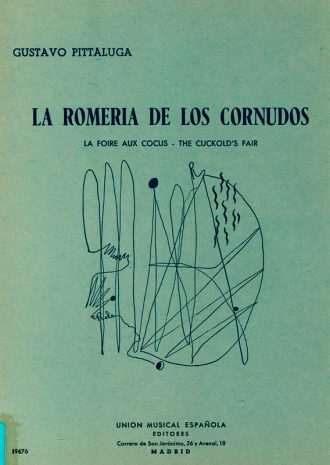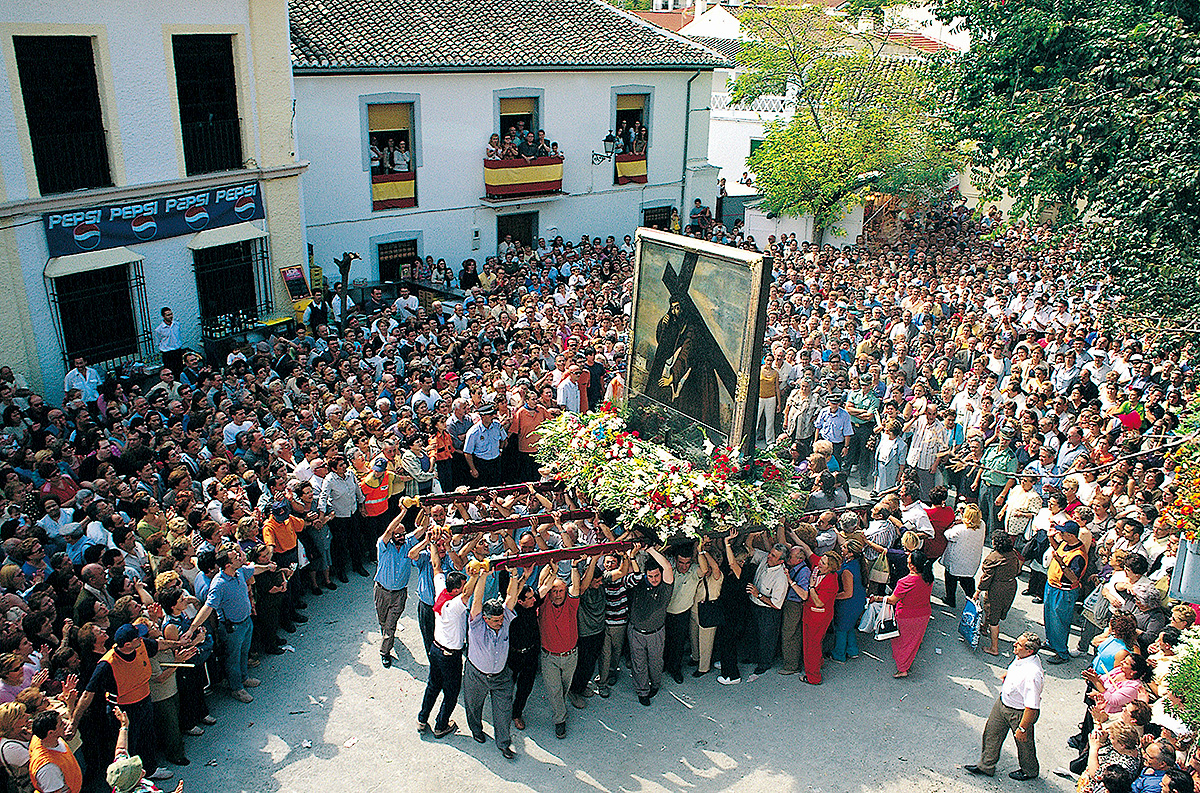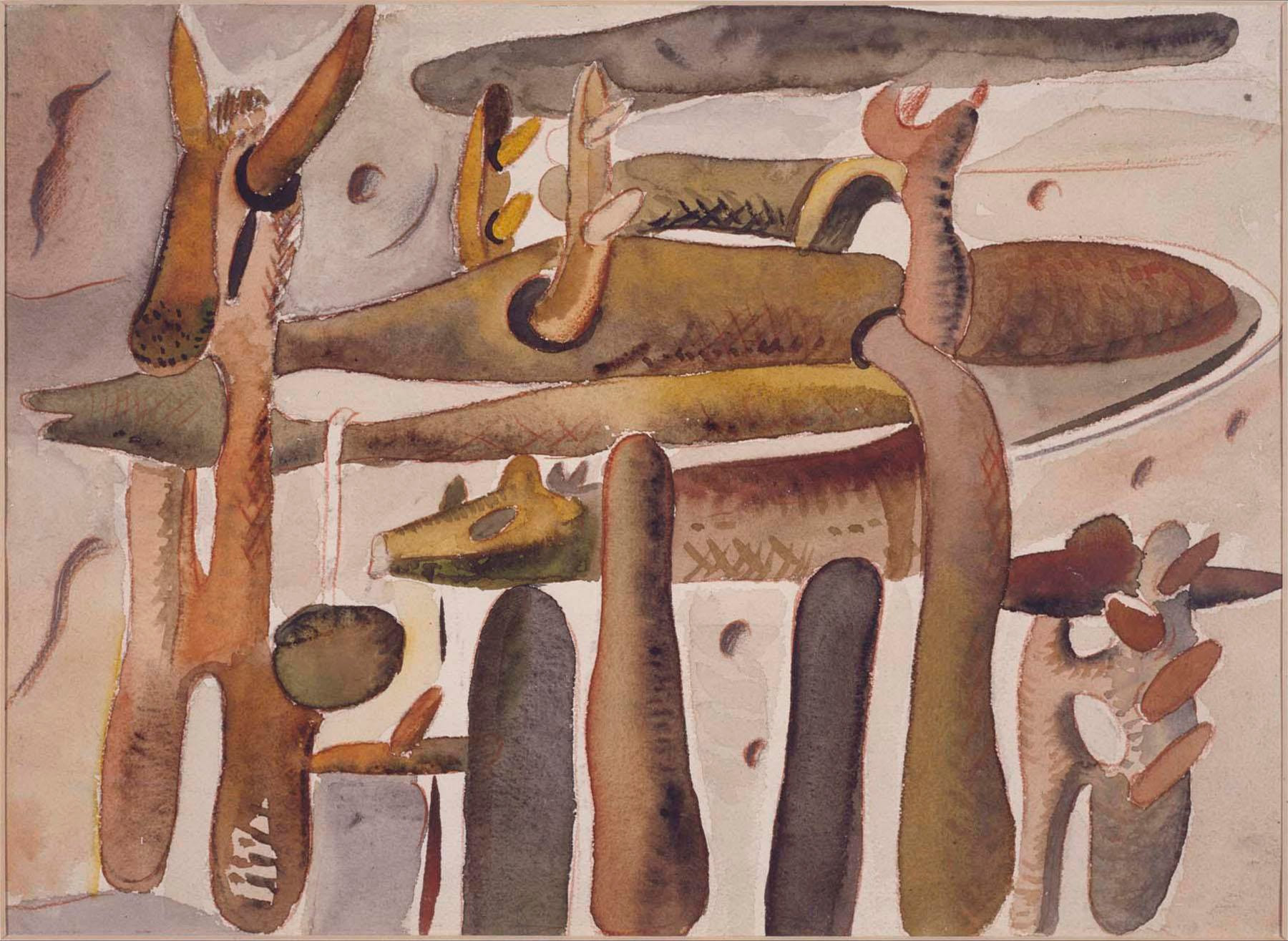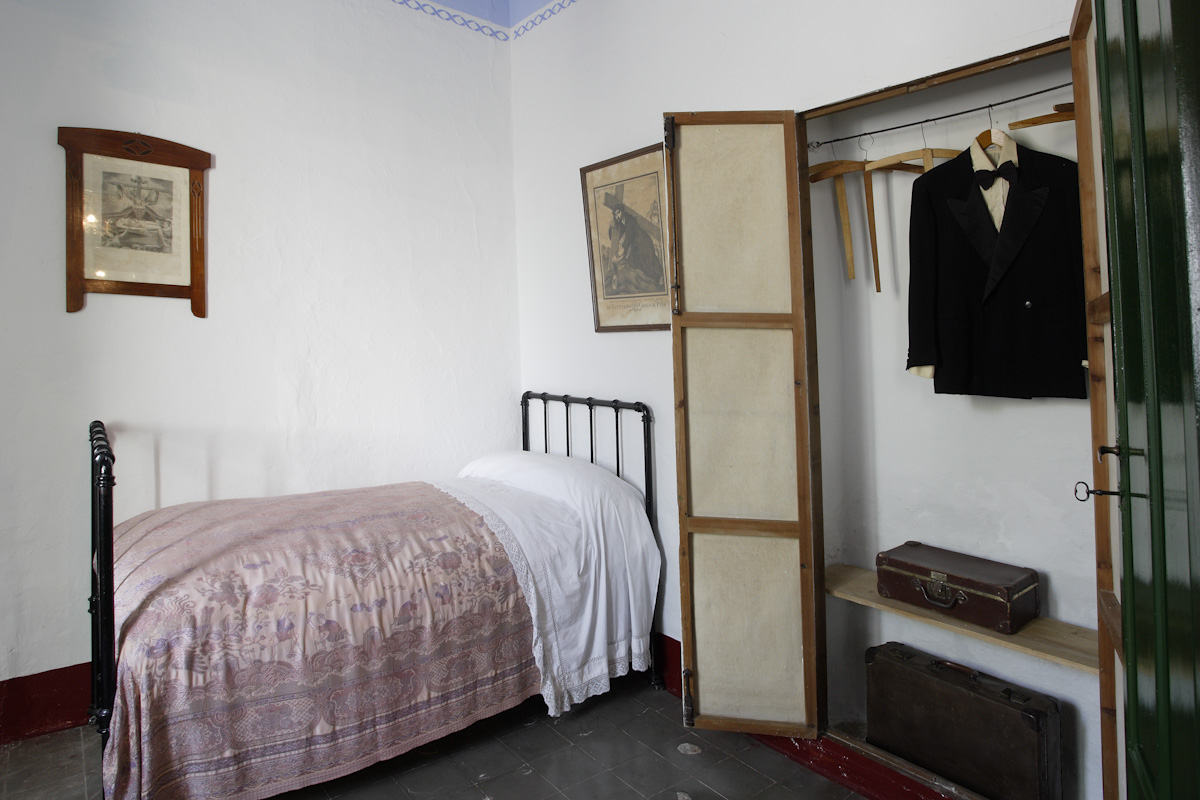
La romería de los cornudos (The Pilgrimage of the Cuckolds) is a ballet in one act, barely twenty minutes long, composed by the musician of the Generation of the Republic Gustavo Pittaluga (Madrid, 1906-Madrid 1975) with verbal argument of Federico García Lorca and Cipriano Rivas Cherif.
The composition happens to be one of the historical references of Spanish dance whose score contains Falla’s ‘Master Peter’s Puppet Show’.
In the midst of the pilgrimage of the Cristo del Paño of Moclín, Sacristán, the protagonist, tries to seduce Sierra, a married woman who has come to the chapel accompanied by her husband, called Chivato, to implore the wonder of her fertility. The intercession of Christ, however, obtains two miracles: the gift of fertility and an extramarital relationship with Sacristán.

Two of the characteristics of the Generation of 27 coincide in the work: the inclination towards the popular and the fondness for the avant-garde. The design of the ballet suggests the influence of Diáguilev’s Ballets Russes that had visited Spain. The composition happens to be one of the historical references of Spanish dance whose score contains Falla’s of Master Peter’s Puppet Show.
Alberto Sánchez’s scenography is today a museum piece that illustrates the Spanish pictorial renovation movement of the 1920s and 1930s in which Picasso, Dalí and Miró also took part.
The ballet was first performed on November 9, 1933 at the Teatro Calderón in Madrid by the company of Encarnación López Júlvez, La Argentinita, music by Gustavo Pittaluga and set by Alberto Sánchez.

85 years later, in January 2018, in Madrid, the Juan March Foundation recovered the ballet by García Lorca and Rivas Cherif. It was the first performance of the work, after its premiere in 1933. The sets designed by Alberto Sánchez, which are preserved in the Museo Nacional Centro de Arte Reina Sofía, were used and songs adapted by Federico García Lorca were interspersed. The choreography was the work of Antonio Najarro, director of the Spanish National Ballet. On the musical side, it will be accompanied by pianist Miguel Ángel López, singer María Mezcle and guitarist José Luis Montón.
The plot of the ballet is inspired by the pilgrimage of the Cristo del Paño de Moclín (Christ of the Cloth of Moclín) (Granada), a 2.64 by 2.21 meter rough canvas that was used, according to legend, by the soldiers of the Catholic Monarchs as a banner during the Spanish Reconquest. The church authorized its worship in 1695 but banned it between 1957 and 1971 after a priest slashed it and poured a bucket of lime on it to put an end to the frauds committed by some pilgrims taking advantage of the festivity. The painting, in fact, has undergone so many restorations that it is impossible to guess what it was originally like.
The history of the staging of the ballet was full of setbacks. After its premiere in Madrid, the ballet was performed abroad, including Paris. But after the assassination of García Lorca, and with the rest of the company’s directors in exile, the show was performed on tour in the United States and Canada. For this new production, which was performed by the Russian Ballet of Monte Carlo, the sister of La Argentinita, Pilar López Júlvez, created a new choreography, and the painter Joan Junyer was responsible for creating new costumes and scenery.

.
The pilgrimage of the Cristo del Paño also inspired Lorca’s final scene of Yerma. According to Isabel García Lorca, a poster of the religious gathering decorated the family home in Asquerosa (Disgusting), currently Valderrubio. The procession, which still summons thousands of people, is held every year on October 5, although its character has changed profoundly.
The pilgrimage of the Cristo del Paño is still a very popular gathering in Granada, although those present seek not only to heal infertility but all kinds of miracles in exchange for donations. Dozens of beggars usually gather along the slope leading up to the hermitage where the painting is venerated and, during the procession, believers rub it with handkerchiefs to extract its supernatural essence.
Version for the orchestra of The Pilgrimage of the Cuckolds
Version for piano of The Pilgrimage of the Cuckolds